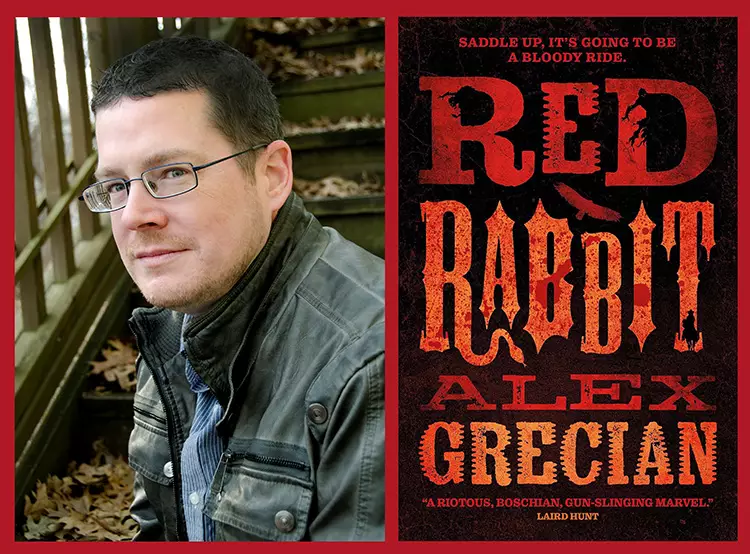The Wild West has long been a fascinating backdrop for tales of adventure, lawlessness, and survival. Recently, author Alex Grecian has taken a bold step into this rugged terrain with his novel “Red Rabbit,” blending elements of horror with traditional Western themes. This article will explore the depths of Grecian’s unique narrative, the intricate world-building, and the characters that breathe life into this haunting tale.
“Red Rabbit” tells the story of Sadie Grace, a woman wrongfully accused of witchcraft, who finds herself on the run in a blistering landscape of drought and desolation. The narrative captures not only the physical dangers of the untamed frontier but also the moral ambiguity of its characters. The plains of Kansas become a character in their own right, serving as a harsh and unforgiving setting filled with lurking threats that extend beyond the supernatural. As bounty hunters converge on Sadie, the stakes escalate considerably, making every moment brimming with tension and uncertainty.
The incorporation of horror elements heightens the sense of suspense. Grecian populates the narrative with creatures and threats that challenge the protagonists in ways that are far more harrowing than mere gunfights or old-fashioned duels at high noon. These monsters, which represent the darker sides of humanity and the fragility of existence, coincide with the more conventional Western elements to create a context that transcends traditional genre boundaries.
The characters in “Red Rabbit” are multidimensional, each with their unique motivations and backstories. Sadie Grace is not just a victim; she embodies strength and defiance in the face of overwhelming odds. The presence of Old Tom, a bona fide witch hunter, adds a layer of complexity to the narrative. His intentions blur the line between hero and villain, reminding readers that in a world driven by desperation, labels can become extensions of prejudice.
Moreover, Grecian introduces a diverse cast that includes a recently widowed schoolteacher and a couple of vagabond cowboys. This eclectic group mirrors the societal structures being challenged throughout the story, inviting readers to witness how context shapes character motivations and moral choices. Their camaraderie creates an emotional core, transforming the reader’s investment in the journey and the consequential risks they decide to take as they traverse the dangerous plains in a stolen red stagecoach.
Grecian’s meticulous attention to historical detail sets “Red Rabbit” apart from more fantastical representations of the Wild West. The author cleverly integrates aspects of real history while allowing the fictional and supernatural to coexist. By doing extensive research on period-specific elements—from the construction of stagecoaches to the societal structures of the 19th-century American frontier—Grecian lends authenticity to a story that could easily have drifted into the realm of the implausible.
However, the author does not merely employ research to anchor his narrative; rather, it serves as a springboard for his creativity. While Sadie initially appeared to fit into the mold of a traditional Western heroine, Grecian allows her character to evolve, leading to twists and turns that were perhaps not initially anticipated. The mystical elements, cleverly twisted into the narrative, add depth and intrigue, making for a reading experience that prompts introspection about societal norms, morality, and the human condition itself.
At its core, “Red Rabbit” isn’t just a story about survival in a brutal environment; it delves into the complexities of human behavior when faced with fear. The characters’ varied responses to threat highlight their adaptability, resilience, and sometimes their moral failings. Grecian’s exploration of these themes resonates in modern times as societies grapple with discrimination, fear-based decisions, and the complexities of justice.
While the action-packed ride through the Wild West captivates readers, it is the underlying examination of character and choice that lingers long after the last page is turned. The dichotomy of man’s struggle against nature, each other, and the monsters lurking within becomes the driving force, making “Red Rabbit” a thought-provoking addition to the canon of Western literature.
Alex Grecian’s “Red Rabbit” masterfully intertwines horror with the Western genre, crafting a narrative that pushes boundaries and challenges readers’ perceptions of morality and survival. As we haunt the desolate settings alongside Sadie Grace and her uneasy band of companions, we find ourselves grappling with moral ambiguities and existential threats. In this novel, the horizon is not just a geographical space but reflects the uncharted territories of the human soul, enhancing the Wild West’s allure while reminding us of the darkness that can arise within it. As readers venture through its pages, they are left to ponder: what monsters lie within and beyond?

